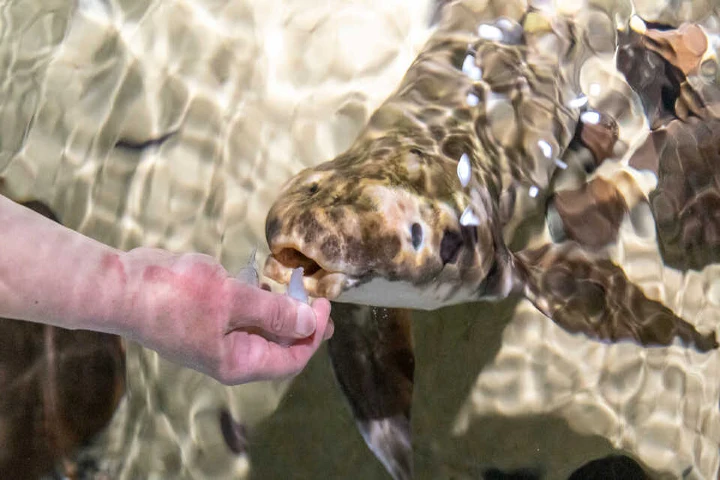As far as fish species go, Methuselah, the Australian lungfish is different but she is a star in her own right. One may ask why? She is the world’s oldest living aquarium fish and her age may be more than 100 years!
The Australian lungfish or the Queensland lungfish is one of six lungfish species in the world. Described as living fossils, these creatures first showed up on the fossil record about 380 million years ago and what is very significant is that their genome is the largest known of any animal and is 14 times that of humans. They are different from other fishes as they have one or two lungs in addition to their gills.
These lungs play a vital role. In normal times, these fish use gills to get oxygen but if the quality of water changes or streams become dry, they are capable of breathing air through their lung(s).
As per a smithsonianmag.com report this fish’s story begins in November 1938 when she arrived at Steinhart Aquarium in San Francisco, United States, travelling in an ocean liner. Interestingly, she was named Methuselah – after the figure from the Bible who lived for 969 years. And today she proved worthy of the name by outliving 231 other fish from Fiji and Australia who had landed in the US along with her. She continues to make her presence felt by swimming in California Academy of Sciences’ aquarium.
Unofficially in 2017 she was declared as the world’s oldest living aquarium fish but now a DNA analysis suggests that her age in fact may be more than what is thought to be. Earlier she was estimated to be 84 years old but now research – details of which will be published later this year – points out that Methuselah is 92 though she may be more – 101.
Talking about this lungfish in a statement, Charles Delbeek, Curator of Aquarium Projects at Steinhart Aquarium said: “Although we know Methuselah came to us in the late 1930s, there was no method for determining her age at that time, so it’s incredibly exciting to get science-based information on her actual age.”
The curator added: “Methuselah is an important ambassador for her species, helping to educate and stoke curiosity in visitors from all over the world. But her impact goes beyond delighting guests at the aquarium: Making our living collection available to researchers across the world helps further our understanding of biodiversity and what species need to survive and thrive.”
It was not just Methuselah’s sample that was collected as scientists did the same for 32 other lungfish in the US and Australia.
New methods have made it easier to determine the age of lungfish by collecting a tiny sample of the fin – less than half a centimetre long and wide. In the past, researchers had to check their ear bones or remove entire scales which harmed them. At present, scientists in the sample look for specific molecules sticking to the fish’s DNA which are called methyl groups. These increase with age and thus help in determining their age.
The study of the ages of these lungfish provides insight into how to fine-tune their aging method and also know more about the species’ longevity.
Despite nature providing these animals lungs to breathe, they are listed as endangered on the International Union for Conservation of Nature’s Red List because of threats from dams, pollution and invasive species.
Meanwhile, Methuselah continues to charm the visitors to Steinhart Aquarium having built a reputation for her “charming personality and penchant for belly rubs,” according to the statement.




















